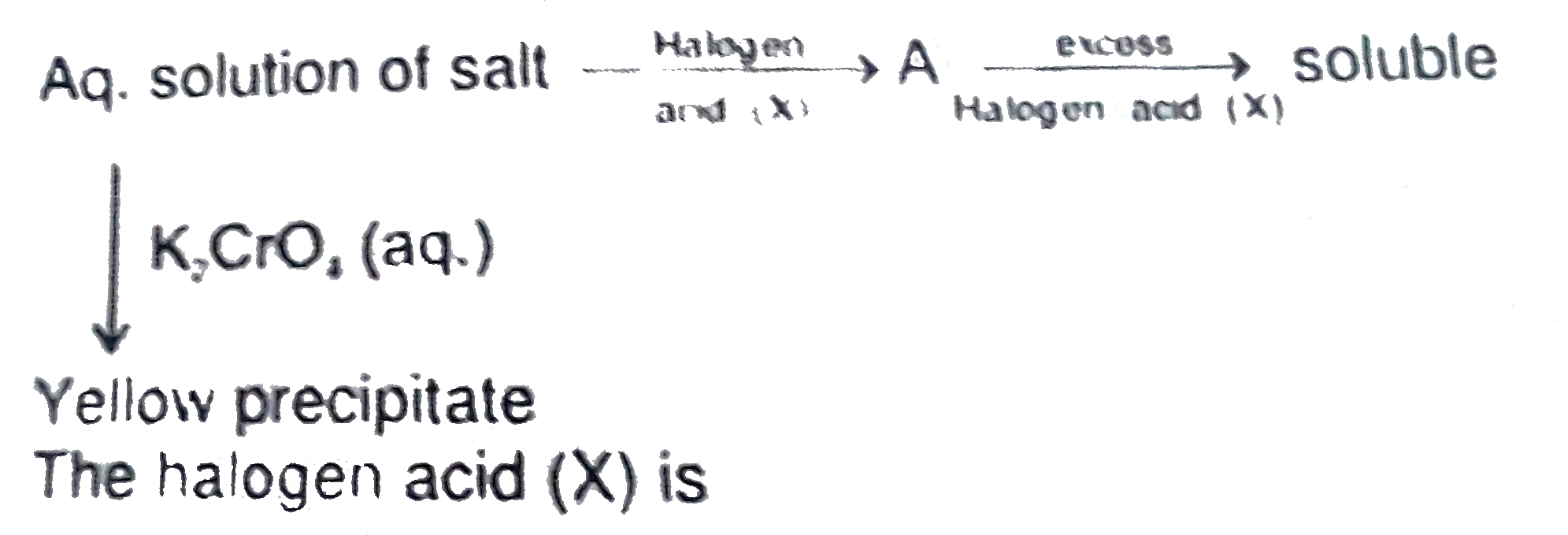Halogens react with each other to form a number of compounds called interalogen compounds. Their genral formula is AXn, where A is less electronegative halogen while X is a more electronegative halogen and n is its number. The interhalogen compounds are essentially convalent and more reactive than the halogens since the bond A-X is weaker than A-A or X-X bond. The reaction of interhalogens are similar to those of halogens.
How many lone pairs of electrons are present on chlorine in CIF3 molecule ?
0
1
2
3
The correct Answer is:C
Step by step video, text & image solution for Halogens react with each other to form a number of compounds called interalogen compounds. Their genral formula is AX_(n), where A is less electronegative halogen while X is a more electronegative halogen and n is its number. The interhalogen compounds are essentially convalent and more reactive than the halogens since the bond A-X is weaker than A-A or X-X bond. The reaction of interhalogens are similar to those of halogens. How many lone pairs of electrons are present on chlorine in CIF_(3) molecule ? by Chemistry experts to help you in doubts & scoring excellent marks in Class 12 exams.
Updated on:21/07/2023Topper's Solved these Questions
- P-BLOCK ELEMENTSBOOK - MOTIONCHAPTER - P-BLOCK ELEMENTSEXERCISE - Exercise - 4 | Level-I Previous Year | JEE Main
37 Videos
- P-BLOCK ELEMENTSBOOK - MOTIONCHAPTER - P-BLOCK ELEMENTSEXERCISE - Exercise - 2 Objective Problems | JEE Adv.
37 Videos
- OXIDATION & REDUCTION BOOK - MOTIONCHAPTER - OXIDATION & REDUCTION EXERCISE - EXERCISE -4(LEVEL-II)
10 Videos
- PERIODIC TABLE BOOK - MOTIONCHAPTER - PERIODIC TABLE EXERCISE - Exercise - 4 | Level-II
22 Videos
Similar Questions
Knowledge Check
Halogens react with each other to form a number of compounds called interalogen compounds. Their genral formula is AXn, where A is less electronegative halogen while X is a more electronegative halogen and n is its number. The interhalogen compounds are essentially convalent and more reactive than the halogens since the bond A-X is weaker than A-A or X-X bond. The reaction of interhalogens are similar to those of halogens.
Which of the following statement is wrong for interhalogen ?AThe value of n in AXn (interhalogen) can be 1,3,5 or 7BThe value of n in AXn (intrehalogen) can be 2,4, or 6CA can never be fluorine as it is most electronegative halogen.DX can never be iodine as it is least electronegative halogen.Halogens react with each other to form a number of compounds called interalogen compounds. Their genral formula is AXn, where A is less electronegative halogen while X is a more electronegative halogen and n is its number. The interhalogen compounds are essentially convalent and more reactive than the halogens since the bond A-X is weaker than A-A or X-X bond. The reaction of interhalogens are similar to those of halogens.
Which of the following interhalogen compound is not possible ?AIF7BIF5CCIF3DFBr3Halogens react with each other to form a number of compounds called interalogen compounds. Their genral formula is AXn, where A is less electronegative halogen while X is a more electronegative halogen and n is its number. The interhalogen compounds are essentially convalent and more reactive than the halogens since the bond A-X is weaker than A-A or X-X bond. The reaction of interhalogens are similar to those of halogens.
Which halogen shows maximum oxidation state in forming interhalogen compound ?AIBBrCCIDF
Inter halogens are more reactive than halogens why?
View SolutionWhy are interhalogen compounds more reactive than halogens ?
View SolutionHalogens react with each other to form a number of compounds called inter halogen compounds. Their general formula is AXn, where A is less electronegative halogen while X is a more electronegative halogen and n is its number. The inter halogen compounds are essentially covalent and more reactive than the halogens since the bond A-X is weaker than A-A or X-x bond. The reactions of interhalogens are similar to those of halogens.
Which of the following inter halogen compounds is not possible?
View SolutionThe halogen which forms maximum number of interhalogen compounds is
View Solution
The halogen acid (X) is
View Solution
